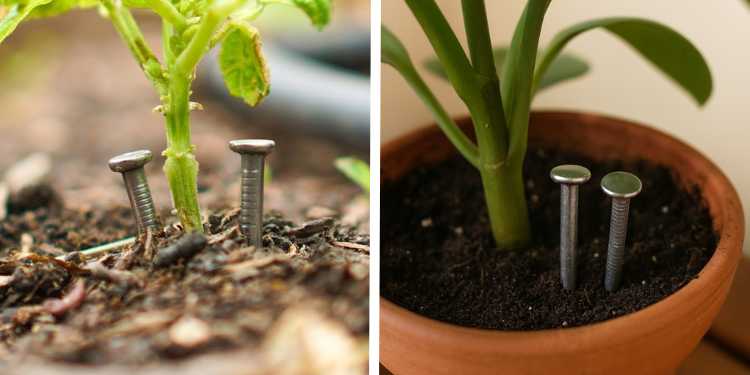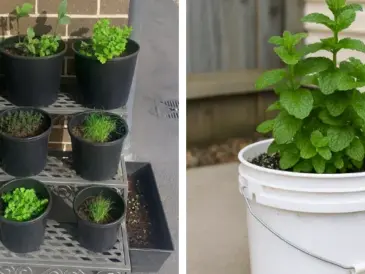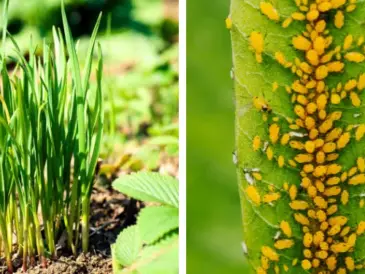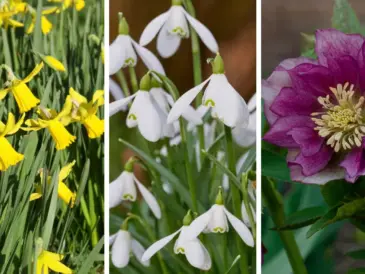You’ve probably heard of watering with banana peel tea, sprinkling coffee grounds for nutrients, or using eggshells for calcium – but here’s a surprisingly old and forgotten gardening trick that deserves a comeback: placing two iron nails in your potted houseplants.
Why Iron Is Essential for Healthy Plants
Just like humans, plants need trace minerals to stay healthy – and iron is one of the most important among them.
Iron plays a crucial role in chlorophyll production, which gives leaves their vibrant green color and helps plants photosynthesize efficiently.
Without enough iron, plants can’t produce sufficient chlorophyll. The result?
- Yellowing leaves (especially between the veins)
- Stunted growth
- Weak stems
- Poor flowering or dull color
This condition, known as iron chlorosis, is especially common in potted plants, where soil nutrients get depleted over time.
Since most houseplants don’t get fresh mineral-rich rain or natural decomposition like outdoor plants do, they often lack this key element – and that’s where the nail trick comes in.
The Science Behind the Nail Trick
When you place ordinary iron nails in the soil, they slowly begin to oxidize (rust) over time.
As they rust, they release iron oxide – a natural form of iron that plants can absorb in small amounts through their root system.
Essentially, you’re creating a micro-dose iron supplement for your plant, directly in the pot.
This gradual process prevents the risk of over-fertilization while providing a consistent source of iron and trace minerals.
Why It Works So Well:
- Rust = iron oxide, a mild, plant-safe mineral form of iron
- Slow release ensures steady nutrient availability over months
- No synthetic chemicals – it’s completely natural
- Eco-friendly reuse of old materials you already have
This simple method mimics what happens naturally in the wild, where decaying minerals and metals leach small amounts of iron into the soil over time.
Which Plants Benefit Most from This Trick
Not every houseplant needs extra iron – but many popular indoor species are particularly sensitive to deficiencies.
Plants that thrive on consistent green foliage, like tropicals and ornamentals, respond beautifully to a small boost of iron.
Here are some that benefit the most:
- Peace lilies – for darker, more vibrant leaves
- Ferns – prevents pale fronds and improves density
- Philodendrons and Pothos – keeps new leaves rich green
- Spider plants – combats yellow streaking
- Rubber plants and Ficus – supports strong stem growth
- Indoor palms (Areca, Parlor Palm, Majesty) – reduces yellowing
- African violets – enhances flowering and leaf color
If your plant’s new leaves are pale while veins remain green, or if older leaves turn yellow from the base up – it’s often a sign of iron deficiency.
How to Use Nails Safely in Potted Plants
This hack is simple, but technique matters. You want the nails to rust naturally and release minerals without harming your plant’s roots.
Follow these easy steps:
Step 1: Choose the Right Nails
Use plain iron or steel nails — not galvanized or coated ones.
Avoid stainless steel nails too, as they won’t rust and won’t release iron.
Ideal options:
- Old rusty nails you already have
- Plain iron nails from a hardware store
- Iron screws or bolts (if uncoated)
Avoid:
- Painted nails (contain chemicals)
- Zinc- or copper-coated nails (can be toxic to plants)
Step 2: Clean and Prepare Them
If the nails are new, rough them up a bit with sandpaper or soak them briefly in a saltwater solution to start the oxidation process faster.
Dry them before use – this step helps them begin rusting once placed in the damp soil.
Step 3: Insert in the Soil
Gently push two or three nails into the soil, about 2–3 inches away from the main stem of the plant. They should be half-buried, with the tops slightly visible for easy removal later.
For smaller pots (under 6 inches wide), one nail is enough. For larger pots or big floor plants, you can add 3–4 spaced evenly around the edge.
Step 4: Water Normally
As you water your plant, moisture reacts with the iron, creating mild rust that slowly leaches into the soil.
You won’t notice immediate changes – it’s a gradual process that unfolds over several weeks.
Over time, your plant will start to show:
- Greener leaves
- Faster growth
- Healthier new shoots
Step 5: Replace Periodically
After about 3–6 months, check the nails. If they’ve rusted significantly or dissolved, remove them and replace them with new ones.
This keeps the iron supply consistent and prevents buildup.
How Long It Takes to See Results
Depending on the plant and its condition, you might start to notice subtle improvements within 3–4 weeks.
New growth usually appears deeper green, and yellowing leaves stop spreading. Within a couple of months, your plant’s foliage may look noticeably more vibrant and full.
Because it’s a slow-release method, patience is key – this is not a quick fix, but a steady, natural restoration process.
Why the “Two Nails” Rule Works Best
You may wonder: why specifically two nails?
The answer lies in balance. A single nail might not provide enough iron for the pot’s entire soil area, while too many can make the soil slightly acidic.
Two nails provide an even distribution of trace minerals without disturbing the soil’s pH too much.
It’s a simple rule of thumb gardeners discovered through trial and observation – the perfect midpoint between effectiveness and safety.
The Signs That the Trick Is Working
You’ll know the nail trick is helping your plant when you notice:
- Deeper green color: Iron boosts chlorophyll production, restoring the leaf’s natural color.
- Faster, stronger growth: Iron improves energy conversion and photosynthesis.
- No more yellow leaves: Particularly in plants that had iron deficiency.
- Healthier soil: Mild oxidation can even improve soil aeration and microbial activity.
And perhaps most rewarding – your plants simply look happier.
Can This Replace Fertilizer?
Not entirely – nails provide primarily iron, not the full spectrum of nutrients your plants need.
You should still fertilize periodically with a balanced organic or liquid plant food containing nitrogen, phosphorus, and potassium (NPK).
Think of the nails as a supplement, not a full meal. They fill in the mineral gaps that standard fertilizers sometimes miss, especially for plants sensitive to iron deficiency.
Pairing the Nail Trick With Other Natural Boosters
To supercharge your indoor garden, combine this iron trick with other simple, natural hacks:
Crushed Eggshells
Adds calcium and balances soil acidity. Helps prevent root rot and blossom end rot in fruiting plants.
Coffee Grounds
Lightly mix into the topsoil (in small amounts) to add nitrogen and organic matter.
Banana Peel Water
Soak banana peels in water for 48 hours; use this potassium-rich liquid to water flowering plants.
Cinnamon Dust
Sprinkle a small amount on top of the soil to prevent fungal growth and gnats.
Used together, these DIY methods create a balanced ecosystem that nourishes plants gently and sustainably.
Common Mistakes to Avoid
Although safe, this hack can backfire if done incorrectly. Here’s what to watch for:
1. Using coated or galvanized nails: These contain zinc or chemicals that can harm your plant or leach into the soil.
2. Overcrowding with too many nails: Excessive iron can slightly acidify the soil and stress roots. Two nails are plenty for small or medium pots.
3. Using nails too close to the roots: Keep a few inches of distance from the main stem to prevent direct root contact with rusting metal.
4. Expecting overnight results: The process takes time – but that’s the beauty of it. It’s slow, natural, and safe.
The Chemistry: How Rust Helps Plants
When iron rusts (Fe → Fe₂O₃), it forms iron oxide – a mineral compound that slowly dissolves into the soil as Fe²⁺ ions, the same form plants absorb through their roots.
These ions help:
- Build chlorophyll molecules
- Activate plant enzymes
- Promote energy transfer during photosynthesis
This mild rusting process actually mimics natural mineral weathering, the same way iron-rich rocks nourish soil in forests and fields.
So, in essence, your nails are replicating nature’s own mineral-replenishing cycle – right inside your pot.
A Note on Soil pH
Iron absorption is closely linked to soil acidity.
If your soil is too alkaline (high pH), plants struggle to take up iron even if it’s available.
If you use tap water rich in minerals or lime, your soil may gradually become alkaline.
Using rusty nails can gently rebalance soil pH over time, keeping it in the slightly acidic range (6.0–6.5) that most houseplants prefer.
To monitor this, you can test soil pH occasionally using a simple home kit – ensuring conditions stay optimal for nutrient absorption.
Can You Use Nails for Outdoor Plants Too?
Absolutely. This trick works beautifully for both garden beds and container plants.
For outdoor use:
- Push several nails into the soil near the root zone (but not touching roots).
- Water regularly to activate oxidation.
- Replace every 6–12 months, depending on climate and moisture.
It’s especially effective for roses, hydrangeas, tomatoes, and peppers, which are heavy feeders and often show iron deficiency through yellow leaves with green veins.
Placing two plain nails beside your potted plants may sound too simple to make a difference – but it’s a timeless example of how nature responds to balance and patience.





